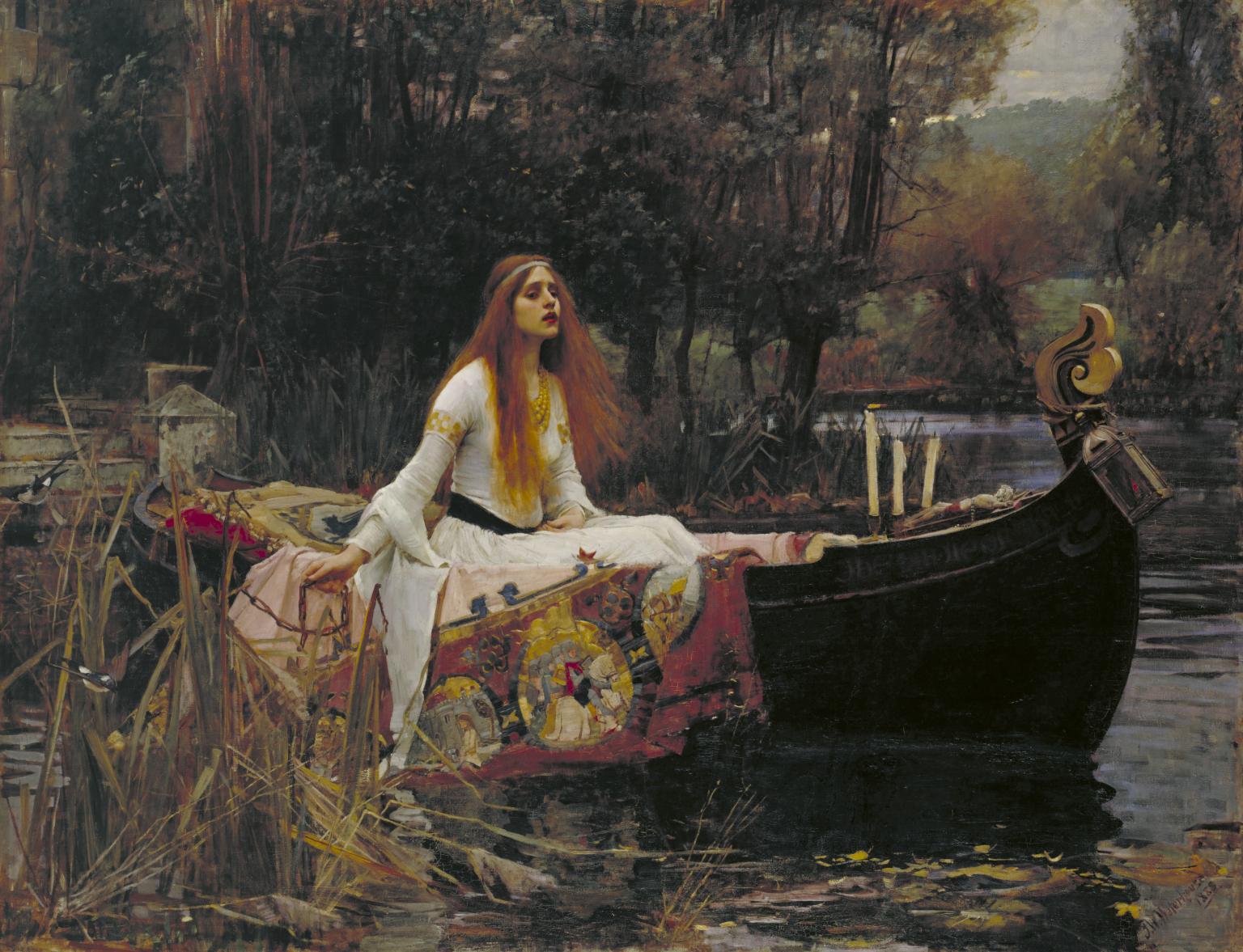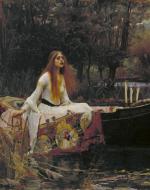Created by Ellen McDermot on Mon, 06/14/2021 - 10:53
Description:
Waterhouse's painting represents the following lines from Tennyson’s ‘The Lady of Shalott’:
And down the river’s dim expanse
Like some bold seer in a trance,
Seeing all his own mischance –
With glassy countenance
Did she look to Camelot.
And at the closing of the day
She loosed the chain, and down she lay;
The broad stream bore her far away,
The Lady of Shalott.
Waterhouse represents Tennyson's character, who lives in Shalott, restricted to a tower, on a river which leads down from Camelot, the castle of King Arthur. She can only see her outside world through the reflection of her mirror, but can never see reality directly. She is subject to a curse, which is revealed when she catches glimpse of the knight Lancelot through her mirror, and risks catching direct sight of him, causing the mirror to crack. She then sings her last song whilst drifting in a boat downstream to Camelot, dying before her arrival.
Waterhouse's painting captures that moment: you can see her letting go of the boats chain. The natural setting, and especially the darker foliage in the background, dramatically contrasts with the Lady's white dress, which enhances associations with innocence and chastity, adding to the tragedy of her fate. Symbolically, Waterhouse includes a crucifix and three candles in the painting. Two of the candles have been blown out, alluding to the heroine's near death.
Copyright:
Associated Place(s)
Artist:
- John William Waterhouse


